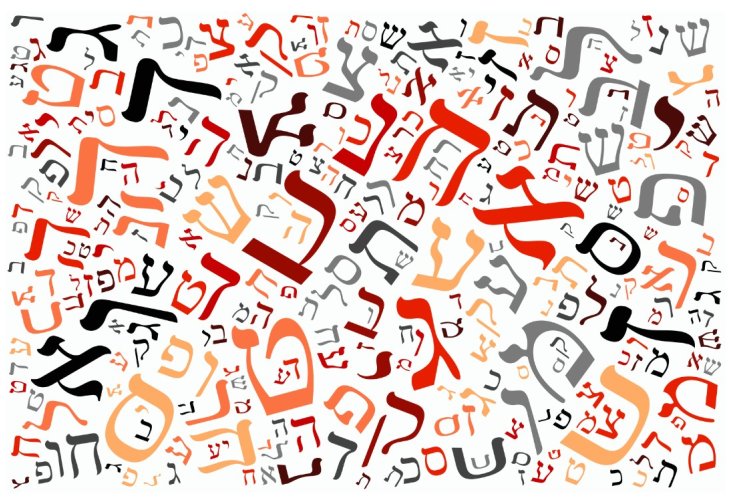Bar Kochba Coins and the Dead Sea Scrolls
Exploring the Origins and Significance of Ashurit Script
 (Photo: shutterstock)
(Photo: shutterstock)This division between the sacred square script preserved for its sanctity and the secular Hebrew script considered of lesser holiness sheds light on the fact that coins found from the Hasmonean period feature the ancient Hebrew script rather than the square script, which was already well-known by that time. For mundane purposes, it was customary to use secular writing, whereas the sacred square script was reserved only for holy texts. Furthermore, even in the Dead Sea Scrolls dated to around two thousand years ago, the main body was written in the square script, but sacred names were written in ancient Hebrew. It was similar to the current practice of writing "Hashem" by replacing the letter hey with a kuf to avoid desecrating the holy name. The use of ancient Hebrew for sacred names in daily study texts demonstrates the early Jewish approach to the square script of holy letters.
This careful treatment of the script is further explained by Rambam in a letter that elucidates: "It is necessary to know that this script, namely the Ashurit script, used for the Torah and the Tablets of the Covenant, is inappropriate for secular use, and Israelites have consistently avoided it, reserving it solely for sacred texts. Consequently, secular texts and coins routinely featured the Hebrew script rather than Ashurit."
Rav Yosef Chaim of Baghdad in the responsa "Rav Pe'alim" forbade printing invitations to celebrations in Ashurit letters, as they would end up discarded in the trash.
It is noted in the Talmud that a prophet who returned with the people from Babylonian exile decreed the use of Ashurit script for the Torah. This decree was necessary to separate Israel from local distortions by the Samaritans and to elevate its status among the common folk, thus necessitating a divine decree.
* * *
This explanation reconciles the Talmud's own account and aligns the perspectives of simple interpretation scholars with those of kabbalah scholars.
Even if Mar Zutra (or Mar Ukva) believed that the Torah was initially given in a different script, this view was rejected by the Talmud's sages, as clarified in Sanhedrin:
"It is taught; Rebbe says: Initially, the Torah was given to Israel in this [Ashurit] script. After they sinned, it turned against them, but when they repented, it returned to them.
Why is it called Ashurit? Because it is blessed in writing.
Rabbi Shimon ben Elazar transmitted in the name of R. Eliezer ben Parta, who cited R. Eleazar of Modi'in: This script was never altered, as it is written, 'the hooks of the pillars' — just as the pillars were not changed, neither were the hooks. And it is written, 'to the Jews in their script and their language' — just as their language was not altered, neither was their script."
Thus, according to the Tannaim Rebbe and R. Eleazar of Modi'in, the Torah was given in the square script known as Ashurit. However, as per R. Eleazar of Modi'in, the Torah was always written in Ashurit, whereas according to the Rebbe, during Israel's spiritual decline, the Torah began to be written in another script, but the original square script was preserved in secret and only restored after Israel's redemption, forgotten by the new generation.
According to one Talmudic interpretation, only after returning to the land did the square script receive the name Ashurit, supposedly because it was the secret script brought back from Assyria (Babylon was part of the Assyrian Empire). However, it was in fact publicly given to Israel during the Revelation, just kept hidden for a time.
* * *
Researchers puzzled over the Talmud's statement about the Ashurit script being named because it was brought from Assyria, when in fact the script used in Babylon and Assyria during the exile was the ancient cuneiform script, which is entirely different from the square script known as Ashurit. However, this puzzlement only emphasizes the earlier assertion that the name "Ashurit" does not derive from "Assyrian script" but rather reflects the sacred script found in Assyria and disclosed upon its return to Israel.
Additionally, the Talmud explains another reason for the name "Ashurit": "Why is it called Ashurit? Because it is adorned with writing," suggesting the term derives from the beauty and inherent secrets in its letters, offering joy and enlightenment.
The Ritva elaborates this notion, concluding that the Ashurit script is "adorned with each stroke and basic precepts of the Torah," suggesting it is imbued with divine reverence and continuity through generations.
Most early scholars agree that the sacred texts' letters, as given to Moshe at Sinai, are these very Ashurit letters, as expounded in the mystical tradition.
Some of the early scholars include:
Rambam states: "The script we use for the Torah is Ashurit. Hashem wrote the Torah in Ashurit, from honor and illustriousness, as justified by 'Birthing us in admiration.' As they state: 'Ashurit, for it is the noble script.'"
R. Ovadia of Bartinura also notes: "But the script we currently use for Torah scrolls, called Ashurit, is the script on the Tablets, named Ashur for its prominence in scripts."
In the responses of the Geonim, this topic is explored broadly, concluding that the Torah was originally given in Ashurit, preserved across generations, as endorsed by R. Abraham Ibn Ezra.
* * *
Indeed, the letters of a Torah scroll inspire awe in those who even slightly contemplate their secrets. There is unique charm in the sacred forms, far beyond other scripts, elevating those with spiritual sensitivity and invoking reverence through their divine, precise design.
To purchase the book "The Code" by Rabbi Zamir Cohen, visit Hidabroot Shops

